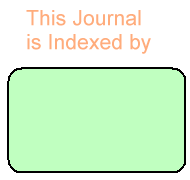Bei Jin1,2 ![]() ,
Xiaosong Zhou1,
Caiyan Chen1,
Xiaosa Zhang1,
Siqiao Chen1
,
Xiaosong Zhou1,
Caiyan Chen1,
Xiaosa Zhang1,
Siqiao Chen1
For correspondence:- Bei Jin Email: jinbeikim2013@163.com Tel:+867593174025
Received: 8 April 2015 Accepted: 6 July 2015 Published: 30 January 2015
Citation: Jin B, Zhou X, Chen C, Zhang X, Chen S. Preparation, characterization and in vitro evaluation of theophylline nanoparticles prepared with dextran-conjugated soy protein. Trop J Pharm Res 2015; 14(8):1323-1332 doi: 10.4314/tjpr.v14i8.2
© 2015 The authors.
This is an Open Access article that uses a funding model which does not charge readers or their institutions for access and distributed under the terms of the Creative Commons Attribution License (http://creativecommons.org/licenses/by/4.0) and the Budapest Open Access Initiative (http://www.budapestopenaccessinitiative.org/read), which permit unrestricted use, distribution, and reproduction in any medium, provided the original work is properly credited..
Purpose: To design and characterize theophylline nanoparticles synthesized with dextran-conjugated soy protein isolate (SPI), and evaluate their encapsulation capacity and release profile in simulated gastrointestinal media.
Methods: SPI-based nanoparticles were prepared with soy protein-dextran conjugates obtained by titanium dioxide (TiO2) photocatalysis using a simple ionic gelation method. Formation of the conjugates was monitored spectrophotometrically for free amino group content (A340nm) and by Fourier transform infrared spectroscopy (FT-IR). The particles were characterized by for particle size and morphology, zeta potential, and in vitro release.
Results: Successful glycoconjugation was evidenced by changes in ultraviolet (UV) absorption (A294), browning, free amino group and FT-IR spectra. The particle size and zeta potential of SPI-dextran nanoparticles tended to increase and decrease, respectively, with increasing SPI/dextran mass ratio. Maximum encapsulation and loading efficiencies were around 91.6 and 3.08 %, respectively, which were significantly higher than for SPI nanoparticles. Successful encapsulation of theophylline in the polymeric matrix was confirmed by FT-IR spectra. In addition, SPI-dextran nanoparticles reduced release (p < 0.05) of theophylline in simulated gastric fluid but and enhanced release (p < 0.05) under simulated intestinal condition.
Conclusion: These results suggest that SPI-dextran nanoparticle formulation is an attractive approach to achieve encapsulation and controlled release of bioactive substances.
Archives


News Updates